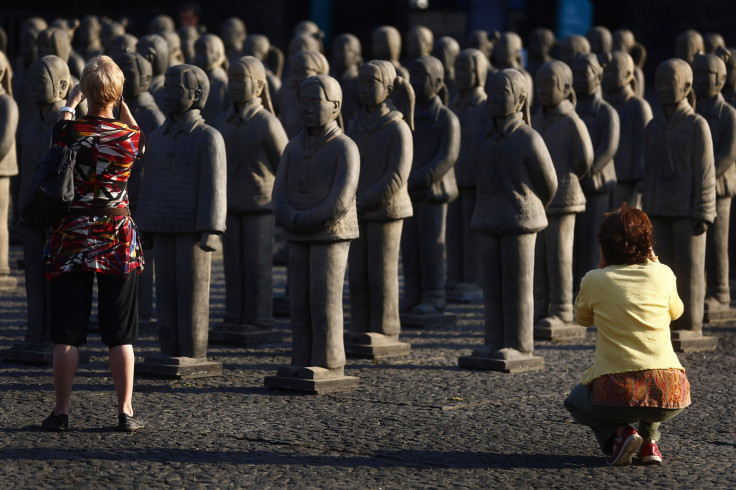Greek Artists Designed Ancient Chinese Terracotta Army Found Near The Tomb Of China's First Emperor

China's famed Terracotta Army may have been designed with a little help and guidance from some surprising guests: The Ancient Greeks.
That’s according to a new theory that will be aired on BBC Two this Sunday that speculates that Ancient Greek artists could have made the trip to China 1,500 years before Marco Polo’s quest to the East. Those artists could have brought figurines over that influenced the construction of the famous warriors that guarded the tomb of the first emperor of China.
There are two main pieces of evidence to support this theory. European DNA has been discovered at sites in China’s Xinjiang province from the era when the statues suddenly appeared, during the time of the First Emperor in third century BCE. The other is the discovery of bronze bird figurines that were made with an ancient wax technique used in Ancient Greece and Egypt.
Whether or not Greek artists were actually present at the site to guide them may never be known. But Lukas Nicke, chair of Asian art history at Vienna University in Austria and a member of the team analyzing the possibility, said, “I imagine that a Greek sculptor may have been at the site to train the locals.”
The 8,000 terracotta figures weren’t discovered until 1974 when farmers came across the figures less than a mile from China’s first emperor, Qin Shi Huang. At the time that the figurines were suspected of having been built, China didn’t have a tradition of building life-sized statues. They generally only made small figures that were about 7.9 inches or so.
If the new finding are correct, then that would mean that those famous statues were influenced by the artistic traditions of people who lived in the century following the death of Alexander the Great, who died in 323 BCE.
The researchers also discovered that the first Emperor’s tomb is complex and much larger than first thought. They also discovered the remains of women who are suspected of having been high ranking concubines of the emperor.
© Copyright IBTimes 2024. All rights reserved.






















